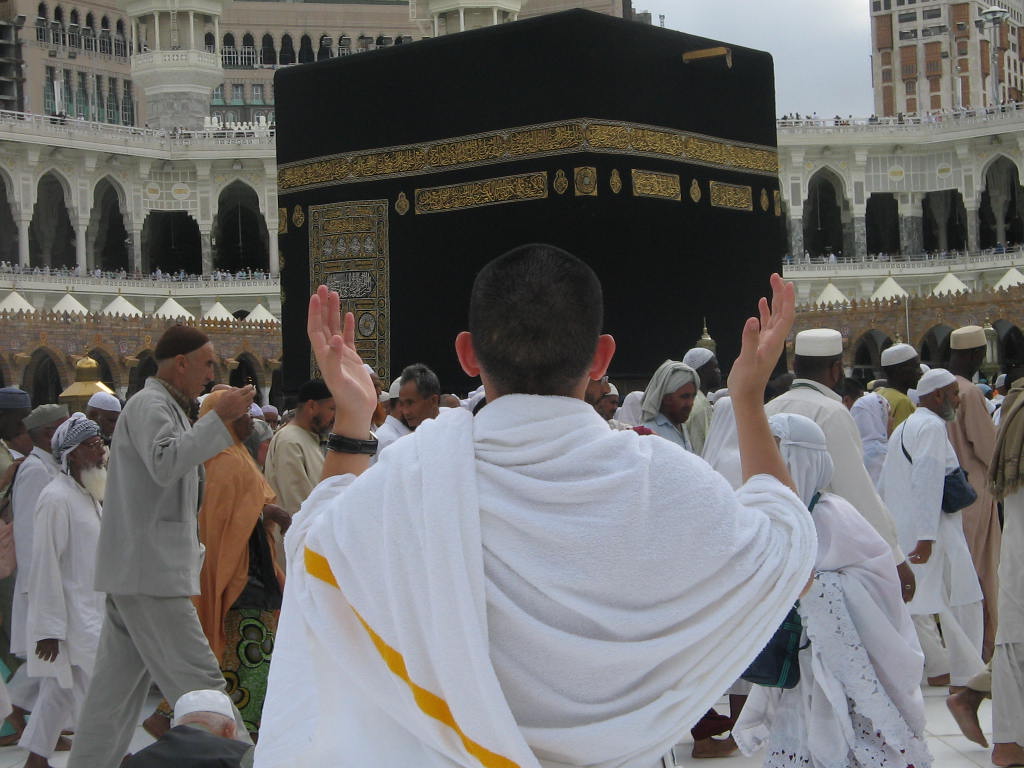The sacred stone, believed to have come from heaven, is installed in the Holy Kaaba on the eastern corner. Hajr-e-Aswad, or the Black Stone, holds a profound place in Islamic tradition, serving as a focal point for millions of pilgrims during the Umrah and Hajj pilgrimages. As pilgrims from the United States secure the best Hajj Packages from the US and embark on their sacred journey, understanding the significance and story of Hajr-e-Aswad is paramount. Throughout history, countless Muslims, prophets, and companions have undertaken these pilgrimages, each paying homage to the revered Black Stone. Showing reverence for the sacred stone remains a pivotal aspect of these sacred journeys.
A Glimpse into the History of Black Stone Hajr e Aswad
If you want to touch and kiss the legendary Black Stone, Hajr e Aswad, book the best Hajj Packages 2024 from the US, and you might get a chance to touch the stone that is believed to come from heaven. The history of Hajr-e-Aswad traces back to the time of Prophet Ibrahim (AS), who, alongside his son Ismail (AS), obediently constructed the Kaaba under Allah’s command. It is said that Angel Gabriel brought the stone to be installed on the Kaaba’s wall during this time. According to Islamic tradition, the Black Stone was originally white but turned black due to the sins of mankind.
Today, the Black Stone has not only changed its colour from white to black but has also been divided into three large pieces and numerous fragments. In order to prevent further fragmentation and preserve its integrity, a stone ring with a silver band is used to hold the stone together securely. Hajr-e-Aswad, or the Black Stone, holds immense significance in Islam because of its divine origin and placement within the Kaaba.
The Black Stone, known as Hajr-e-Aswad, has endured a rough history. In the 7th century CE, the Quraish tribe attacked the Kaaba, leading to the fracture of the Black Stone. Subsequently, massive flooding in Mecca caused significant damage to the Kaaba, necessitating its reconstruction. Around 930 CE, the Qamartians stole the Hajr e Aswad; Qamartians were an extremist Muslim sect from eastern Arabia. They attacked Mecca and took away the sacred stone. According to historians, in 952 CE, the Hajr al-Aswad was returned and re-placed to its location.
The Significance of Hajr e Aswad
The Black Stone, or Hijr e Aswad, is located in the eastern corner of the Kaaba, the holiest site in Islam, nestled in the heart of Mecca. According to Islamic traditions, the Hajr e Aswad is brought by the angel Gabriel from heaven. For pilgrims, securing Hajj Packages from US, the Hajr e Aswad is not just a stone but a tangible connection to their faith. They seek to kiss or touch the Hajr e Aswad when performing Hajj and Umrah rituals, feeling a profound sense of devotion and submission to Allah Almighty.
During the core rituals of Hajj and Umrah, such as Tawaf, where pilgrims circumambulate the Kaaba seven times, the goal is to touch or kiss Hajr-e-Aswad. However, in crowded spaces where this may not be feasible, pilgrims show hand gestures or send kisses towards the Kaaba as a symbolic gesture of reverence. While touching and kissing Hajr e Aswad is not part of the Hajj and Umrah rituals, it’s a deeply cherished act for many pilgrims and worshippers. Best Hajj Packages 2024 often provides accommodations near pilgrimage sites during Hajj to facilitate easier access to the Holy Kaaba. According to various Islamic scholars, duas are accepted at Hajr e Aswad. It is also said that on the Day of Judgement, the Black Stone will give shahdah or testify in favour of all those Muslims who have touched or kissed it with reverence. The Hajr e Aswad served as the starting and ending point of the Tawaf. Pilgrims begin Tawaf from Hajr e Aswad and end the seventh Tawaf at Hajr e Aswad.
Beyond the Physical Touch: The Spiritual Significance
Hajr e Aswad is more than a stone; it’s a stone that came from heaven and serves as a powerful symbol of unity and equality. During pilgrimages, when Muslims perform Tawaf, all pilgrims, regardless of social status or ethnicity, perform the same rituals, united in their devotion to Allah. Furthermore, the Hajar e Aswad reflects the concept of Tawheed. The Black Stone is not an object of worship itself but rather a main source that leads one toward Allah. Hajj Packages from US often include experienced guides who not only help pilgrims navigate Hajj rituals but also provide them insights into the spiritual significance behind each Hajj ritual.
In one of the Hadith of Prophet Muhammad PBUH, the significance of kissing the Hajr e Aswad has proved.
“By Allah! On the Day of Qiyaamah, Allah will present the Hajr e Aswad in such a manner that it will have two eyes and a tongue to testify to the Imaan (faith) of all those who kissed it.” (Tirmidhi)
In another hadith, Prophet Muhammad PBUH mentioned the Hajr e Aswad as the jewel of heaven.
“The Hajr e Aswad and al-Maqam (Ibrahim) are the two jewels from the jewels of Paradise. Had Allah not concealed their radiance, they would illuminate everything between the East and the West.” (Tirmidhi)
In another Hadith, Prophet Muhammad (PBUH) emphasizes the significance of Hajr-e-Aswad, stating that it is the heart of the Holy Ka’abah.
Conclusion
Hajj is a life-altering experience, and the Hajr e Aswad stands as a source of spiritual enlightenment. By understanding the history and significance of Hajr e Aswa through guides, including in Hajj Packages from US, pilgrims can deepen their connection to this sacred relic. Hajj Packages 2024 can be your trusted companion on this sacred journey. Pilgrims from around the world visit Saudi Arabia to perform Hajj, kiss and touch the black stone, following the footsteps of Prophet Muhammad PBUH.










